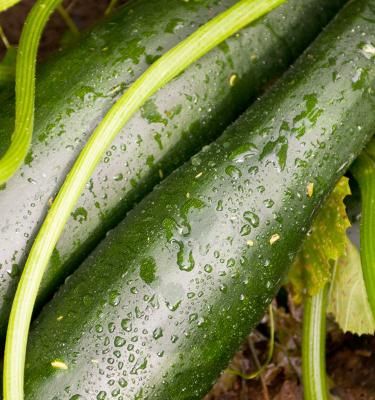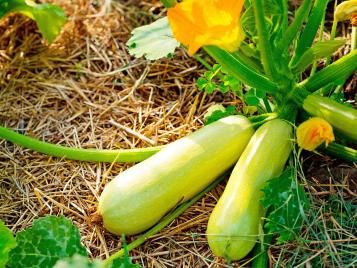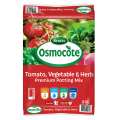

How to Grow Zucchini
Zucchini are now a common, summer staple in the vegetable garden. They are relatively easy to grow and they can be eaten raw added to salads or lightly steamed or roasted. Zucchini and marrows are actually the same thing - leave a zucchini to mature on the plant and it will become a marrow! Modern zucchini varieties have been bred to produce a lot of small, tasty fruit.
Planting zucchinis in Australia
Plant zucchinis between September-January in temperate climates, July-March in the subtropics and October-December in cold climates.
Harvest zucchinis between January-March in cool and temperate climates and September-April in subtropics.
Zucchini plant varieties
There are numerous excellent zucchini varieties including those producing round or yellow fruit. Among them are: Black Beauty, Blackjack, Cocozelle, Golden (yellow fruit), Greyzine (pale colour) Long Florence, Tromboncino and Solar Flare (golden).

What you’ll need to start growing zucchini
You don't need much equipment to plant and grow a zucchini plant. Here are the basics:
- Garden fork and spade
- Trowel
- Compost or soil improver
- Tomato & vegetable fertiliser
- High potash fertiliser
- Zucchini seed
How to grow zucchini:
Planting zucchini & cultivation
Zucchini plants prefer a sheltered position in full sun and a fertile soil that holds plenty of moisture. They are reasonably large plants, so need plenty of room. Space them up to 1m apart. There are some more compact varieties available for small space gardens and these are ideal for growing in containers.
For best results, they can be grown in planting pockets. About 2 to 3 weeks before sowing seed or planting out seedlings, dig a hole 30cm square and deep and fill with a mixture of compost or soil improver mixed with soil. Leave a low mound at the top and sprinkle a vegetable plant food over the soil.
As zucchini need plenty of water, sink a 15cm pot alongside ach plant when sowing or planting out. Watering into the pot ensures moisture goes down to the roots and doesn't sit around the neck of the plant, which can lead to rotting. It also keeps water off the foliage which helps reduce problems with powdery mildew.
Growing zucchini from seeds
To grow zucchini from seed, plant zucchini seeds direct where the plants are to grow. Having created the mounds, sow two or three seeds in each and select the strongest seedling when they have germinated. You may grow two plants per mound if space permits.
How to care for zucchini
Keep the soil constantly moist by watering around the plants - not over the foliage - whenever needed. Once the first fruit starts to swell, feed every 10-14 days with a high potash liquid fertiliser.
Harvesting zucchini
Harvest zucchini when they are 10-12.Scm long. At this length they are at their sweetest and most tender. Regular picking when they are small ensures a long cropping period over several months.
They produce large crops, so one or two plants is all that's needed to feed even the largest family.
Zucchini may be susceptible to the following problems: lack of fruit set, young fruit rotting.
Common zucchini pests, diseases & growing problems
| Powdery mildew |
Powdery mildew on zucchini is a common problem. This is a fungal disease that appears as a white powdery deposit on the leaves, stunting growth and causing leaves to shrivel. Drought-stressed plants are more susceptible.
|
|---|---|
| Yellow zucchini leaves |
Older zucchini leaves often turn yellow and drop off the plant. This is not a cause for concern as they will be replaced by new growth, but also see Cucumber mosaic virus below. |
| Cucumber mosaic virus |
Zucchini leaves turning yellow can also be due to cucumber mosaic virus. This causes deformed, stunted leaves with a characteristic 'mosaic' yellow patterning. Affected plants produce few or no flowers, and any fruit that develop are small and inedible.
|
| Grey mould/ Bortrytis mould |
Grey mould is a fungal disease that appears as powdery grey mould at the stalk of zucchini, gradually covering the whole fruit, which then rots.
|
| Zucchini rotting when small or not setting |
Zucchini fruits can appear to start swelling but then rot or drop off the plant while still small. This occurs when the flowers are not pollinated, and is usually more of a problem early in the season.
|
| Slugs and snails |
Slugs and snails will eat the leaves of young zucchini plants, and can be identified by the slime trails that they leave, as well as the damage they do.
|



